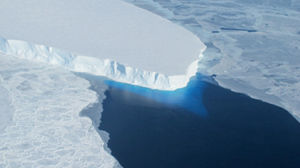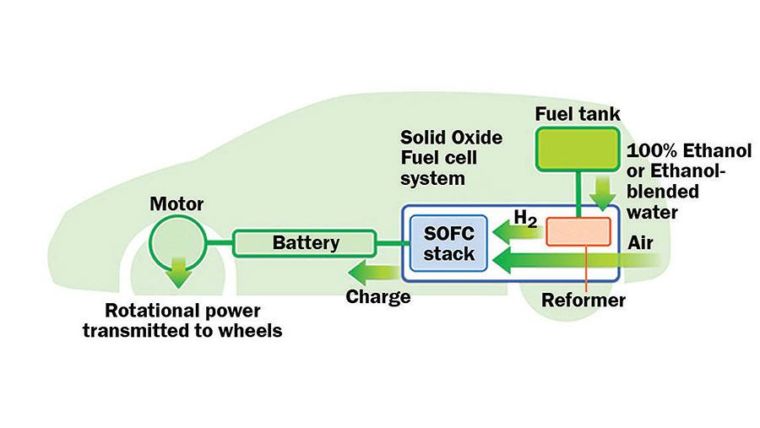According to the following article we still have time to mitigate the worst consequences of melting Antarctica Glaciers. If we eliminate our emissions of CO2 rapidly we can prevent the worst consequences of sea level rise.
If the worst case scenarios are avoided then we can allow future generations the time needed to adopt to significantly higher sea levels and avoid the worst possible costs in terms of economics and human misery.
The question remains if society worldwide has the will to eliminate fossil fuel emissions by 2050 or not.
West Antarctica Glaciers Move on Path Toward Major Sea-level Rise– studies
Christa Marshall and Henry Gass, E&E reporters Published: Tuesday, May 13, 2014
Melting glaciers in West Antarctica are headed toward “irreversible” collapse, suggesting that rising sea levels this century may be worse than expected, and potentially catastrophic in the longer term, scientists warned yesterday.
Two separate papers — one in Science and the other from NASA and University of California, Irvine, researchers — reported similar trends on the western swath of the ice sheet. A half-dozen unstable glaciers there have been accelerating their melt in recent decades, and there is little in the regional geography to stop them from eventual full decline once they retreat into deeper water.
While scientists have known that West Antarctica is a key player with rising sea levels, there was less certainty about specific timelines, and the extent of future melt. The study in Science, for instance, concluded that the Thwaites Glacier could cross a critical melt threshold within 200 years leading to rapid collapse and contribute increasingly to sea-level rise before then.
“We present observational evidence that a large section of the West Antarctic ice sheet has gone into a state of irreversible retreat, and has passed the point of no return. … This retreat will have major consequences for sea-level rise worldwide,” said Eric Rignot, a glaciologist at NASA’s Jet Propulsion Laboratory and the lead author of the first study, accepted for publication in Geophysical Research Letters.
The study analyzed more than two decades of observational data from the Amundsen Sea area, including satellite, airplane and on-the-ground observations. Ice loss from the six glaciers in this region — driven by warm water hitting ice shelves — could contribute up to 1.2 meters (4 feet) of sea-level rise eventually, said Rignot.
Projections of sea-level rise from the Intergovernmental Panel on Climate Change rely on the published record, and don’t fully capture the contribution of West Antarctica, said Sridhar Anandakrishnan, a professor of geosciences at Pennsylvania State University. In October, the Intergovernmental Panel on Climate Change said that global mean sea-level rise during the 21st century could reach 0.26 to 0.97 meter (0.85 to 3.18 feet).
“As papers like this keep coming out, the IPCC (numbers for 2100) will most certainly be revised … and revised upward,” said Anandakrishnan.
Glaciers heading toward a warming sea
Scientists have long suspected that the western ice sheet has been melting — the majority of West Antarctica sits below sea level — but the remoteness of the region prevented scientists from making a detailed examination until the 1990s. With decades of data now to work with, however, Rignot and his colleagues were able to pinpoint the degree of retreat of the six glaciers.
The Smith/Kohler glaciers retreated the most between 1992 and 2011: 35 kilometers. Pine Island Glacier retreated almost as far, 30 km over the 19-year period, followed by Thwaites Glacier at 14 km and Haynes Glacier at 10 km. The rate of retreat is also increasing for each glacier.
While Antarctica has experienced fluctuations in ice cover for millions of years, many researchers believe this melting is particularly extreme and assisted by human-caused climate change.
Antarctica is warming more slowly than other regions of the world, and as its air mass pushes up against its cooler neighbors, the pressure increases wind strength in the region. When the winds get stronger, they push cool surface water east and warm deep ocean water west toward the West Antarctica Ice Sheet. There, the glacier’s “grounding line” — where the foot of the glacier meets the bedrock below — slowly melts and recedes. As climate change continues, warmer waters will continue to flow to West Antarctica, continuing ice melt, Rignot said.
The only thing that could slow or stop the retreat of these glaciers is if they retreated into a hill or mountain in the bedrock, which would elevate the grounding line above the warmer water. After a high-resolution satellite radar mapping of the Antarctic bedrock of the region, Rignot said he was “fairly confident” that no such obstacles exist behind the major retreating glaciers.
Where the NASA-led study focused on observations of the past, the Science paper modeled the future and centered specifically on the fast-moving Thwaites glacier, which acts as a “linchpin” for the rest of the ice sheet. Like the NASA team, scientists from University of Washington concluded that the decline of the Thwaites glacier has already begun and its eventual collapse already may be unstoppable.
Thwaites will continue retreating, and it will eventually hit much deeper water in the bay that can exacerbate melt, according to the scientists. Simultaneously, the surface of the glacier will tilt more, facilitating flow out to sea, said Ben Smith, a scientist at Applied Physics Lab Polar Science Center at the University of Washington and co-author of the research.
Human actions could thwart rapid collapse
In addition to providing much more specific numbers of Antarctica’s future, the model simulations show that there are few feedbacks or barriers to eventually slow the glacier’s ice loss down, according to the paper. Via maps of underlying rock and satellite data on ice movements, the team ran a model that produced accurate representations of the glacier’s loss over the last 18 years. They then used the model to estimate how the glacier would behave under different scenarios.
The good news is that humans may have some control over how quickly the inevitable decline occurs, and the rate of ice loss will not be “extraordinarily high” in immediate decades, according to Ian Joughin, lead author of the study and a scientist at the University of Washington. The ice loss likely will be less than a quarter of a millimeter annually through this century, the scientists said.
The point when Thwaites would reach a key threshold of rapid collapse — or when its ice loss rises above 1 millimeter a year — could occur within 200 years, or take more than 1,000 years, they said.
“If things happen very slowly over 1,000 years, it’s probably not such a big deal. … Two hundred years is a different story,” said Smith. Curbing greenhouse gas emissions now could still make a difference with the pace of ice loss, he said.
Smith added that other glaciers near Thwaites will likely experience a similar pattern, making the timeline crucial. A “rapid collapse” would probably spill over to adjacent catchments, undermining much of West Antarctica, the paper states. It’s also possible that the models are conservative, and the collapse of Thwaites could come more quickly, but “we’ve done a pretty good job” at projections, said Joughin.
Richard Alley, a glaciologist at Penn State, called the results sobering. While the modeling typically gives at least centuries until the rise becomes rapid from the source, the scientists also did not simulate a worst-case scenario, he said.
“Because the retreat is not going rapidly yet, it remains possible that something could occur that would re-establish stability, but if warming continues, such stabilization seems unlikely,” said Alley.




